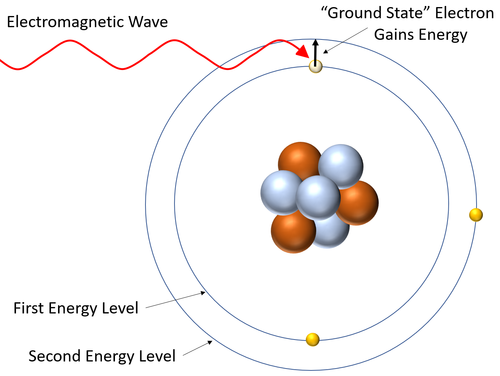Contents
Key Stage 4
Meaning
Absorption spectra are the specific wavelengths of light absorbed by the electrons in atoms as they gain energy.
About Absorption Spectra
- An absorption spectrum is made by passing white light through a material or reflecting it off a material then sending it through a prism to separate the colours.
- The spectrum of white light is a continuous change of colours with all wavelengths having the same intensity.
- An absorption spectrum is a set of specific wavelengths with a low intensity. This appears as dark lines of of missing colour from the normal spectrum made by white light.
- A absorption spectrum is created when electrons absorb the energy from an electromagnetic wave and jump to a higher energy level in an atom. This removes that particular wavelength of electromagnetic wave white light being transmitted or reflected from that material.
- The wavelengths of electromagnetic wave depend on the energy difference between the energy levels in atoms.
| This diagram shows an electron gaining energy by absorbing an electromagnetic wave and becoming excited (moving to a higher energy level). |
References
AQA
Edexcel
- Absorption spectra, pages 191, 192, GCSE Physics, CGP, Edexcel
- Absorption spectrum, page 359, GCSE Combined Science, Pearson Edexcel
- Absorption spectrum, page 95, GCSE Physics, Pearson Edexcel

